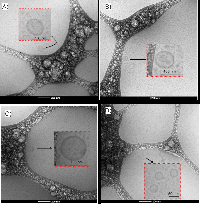Innovations from the Warsaw University of Technology may improve cancer treatment
Great things may come in small packaging – this is particularly true for the fight against cancer. Nanotechnology has an incredible potential to treat cancer because it offers a more efficient therapy while limiting its adverse effects.
The Biomedical Engineering Laboratory established and run by Prof. Tomasz Ciach at the Faculty of Chemical and Process Engineering has come up with an idea that is likely to contribute to the improvement of the effectiveness of anticancer therapies.
From an idea to a start-up
All of that will be possible thanks to delivering drugs using unique non-toxic and biodegradable nanoparticles. The idea to apply nanoparticles in medicine was put forward at the Warsaw University of Technology in 2010. Their promising research results led to applying for a patent two years later. And to develop the technology, Prof. Tomasz Ciach decided to establish a start-up called NanoVelos.
This is the result of Prof. Tomasz Ciach’s many years of work in the capacity of a scientist, engineer and lecturer at the Warsaw University of Technology, but also of his successes and failures. The commitment and involvement of Biomedical Engineering Laboratory members cannot be overestimated. “What we are doing marks decisive progress in science and in the fight for human health”, Prof. Timasz Ciach is proud to say.
Nanotechnology in medicine
Nanotechnology is about using very fine particles in various domains, among other things in medicine. The size of nano-objects generated in this way should not exceed 100nm. Nano-objects used in medicine are from 100 to 10,000 times smaller than human cells and their size is more or less equal to that of enzymes or receptors. To see nano-objects you need special microscopes developed only 30 or so years ago. Up to now scientists have been studying how to use the possibilities that nanotechnology has offered to them.
WUT scientists are working on delivering drugs using unique non-toxic and biodegradable nanoparticles. The technology developed by them is based on using natural substances (like polysaccharides) and mild-condition synthesis. Nanoparticles are stable and their drug-release profile is slow. They are able to permeate the cell membrane to deliver a drug. Various substances can be placed in the structure of a nanoparticle (drugs, proteins, enzymes and genetic material) and therefore, they can be used in treating a range of diseases.
“Their toxic effects seem minimal”, emphasises Iga Wasiak, M.Sc, a doctoral student from Prof. CIach’s team and a member of the NanoVelos Management Board. “Research on mice suggests that there is no toxicity in the case of healthy organs. We think that this offers treatment of relatively low toxicity but with the same effectiveness”.
Nanoparticles versus cancer
This technology can be particularly effective in the case of chemotherapy. “Anticancer drugs do not distinguish between normal and abnormal cancer cells”, explains Iga Wasiak M.Sc. “They destroy both types of cells. Cancer drugs carried in nanoparticles make it possible to modify the biodistribution of such drugs. Owing to this fact such drugs will destroy cancer cells more effectively and the side effects of the therapy will be reduced”.
Nanoparticles also allow chemotherapeutics to remain longer in the body. “This is one of the bigger problems that doctors encounter during chemotherapy – anticancer drugs are quickly removed from tumours which makes it necessary to administer them again”, says Ms Wasiak. “This causes the risk that a tumour may become resistant to the drug administered due to its low doses and interrupted drug exposure. The application of nanoparticles can change that. It may allow the drug to remain in the tumour for a longer time and extend the time of releasing the substances carried in nanoparticles”.
A race against the time
The first clinical trials to research the application of passively targeting nanocarriers in cancer treatment started in the middle of 1980. However, this technology was introduced to clinics only in recent years. Positive therapy results have caused a lot of interest in the development of new technologies based on nanoparticles. All over the world, scientists are working on the application of nanoparticles in cancer therapies. The publication of more research results has brought hope for success.
However, our scientists keep on working on producing more solutions. The term “nanoparticle” refers only to the size of a particle. Such nanoparticles can be built from different ingredients, which will result in the diversity of their properties.
“Tumours in the human body are also different and situated in different places”, explains Ms Wasiak. “No magic nanoparticle able to cure all tumours can be found due to this diversity. Therefore, each of the nanotechnologies developed may be applied in various kinds of therapy”.
Objective: success
Each newly developed nanoparticle embarks on a long and hazardous journey before it can be used in clinics. Before introducing and marketing a new product, it is necessary to follow drug registration procedures and be able to guarantee that the technology developed is safe.
There is ongoing research and development work on the technology in the Biomedical Engineering Laboratory. Nanoparticles are produced on a large scale and tested on animals. The team led by Prof. Tomasz Ciach hopes that they will be able to commercialize the technology and – it goes without saying – help cancer sufferers combat their disease.
Monika Bukowska
Office for Promotion and Information








